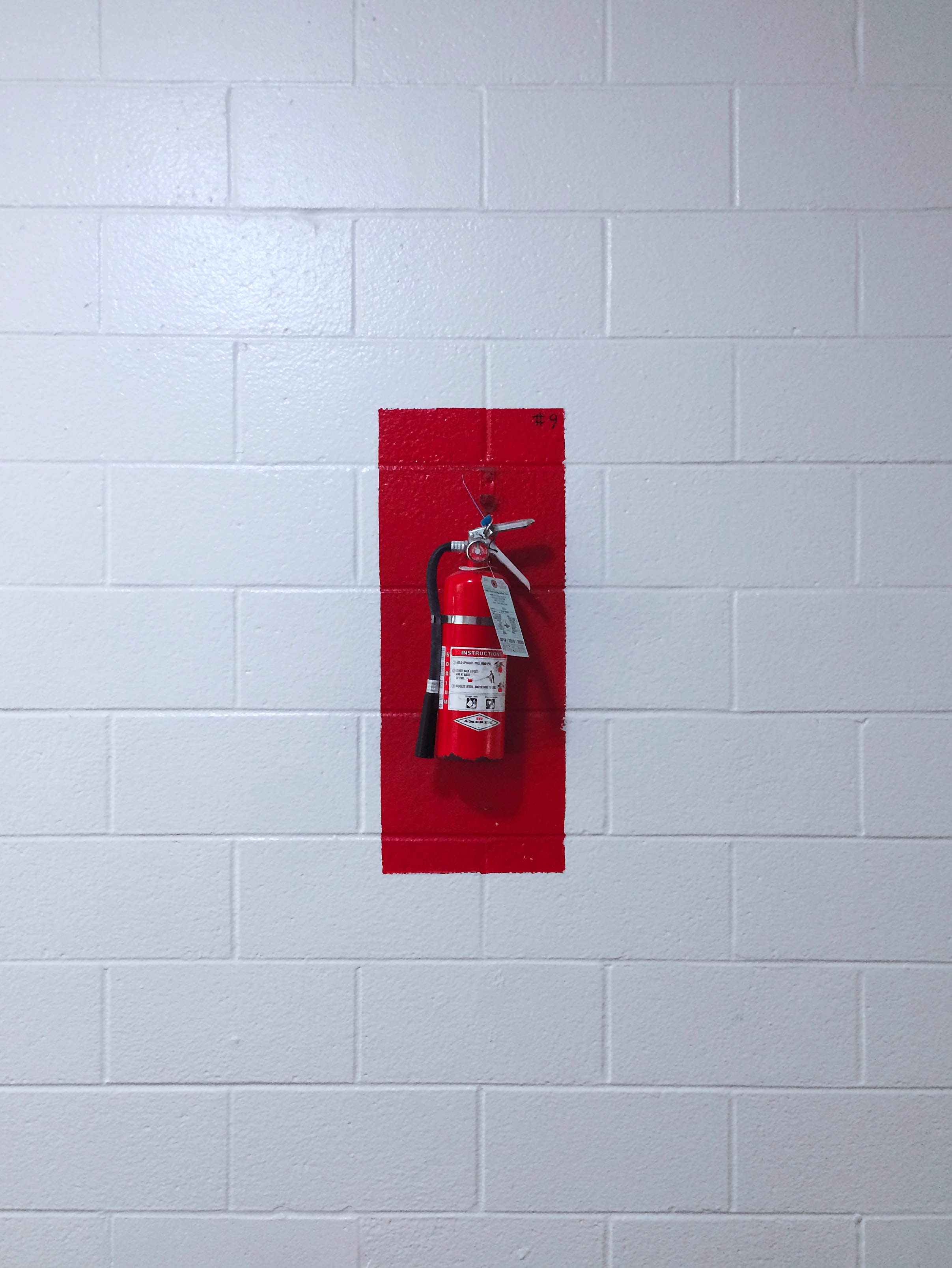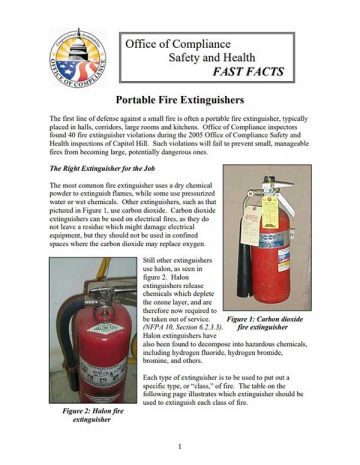The first line of defense against a small fire is often a portable fire extinguisher, typically placed in halls, corridors, large rooms and kitchens. Office of Compliance inspectors found 40 fire extinguisher violations during the 2005 Office of Compliance Safety and Health inspections of Capitol Hill. Such violations will fail to prevent small, manageable fires from becoming large, potentially dangerous ones.
The Right Extinguisher for the Job
The most common fire extinguisher uses a dry chemical powder to extinguish flames, while some use pressurized water or wet chemicals. Other extinguishers, such as that pictured in Figure 1, use carbon dioxide. Carbon dioxide extinguishers can be used on electrical fires, as they do not leave a residue which might damage electrical equipment, but they should not be used in confined spaces where the carbon dioxide may replace oxygen.
Still other extinguishers use halon, as seen in figure 2. Halon extinguishers release chemicals which deplete the ozone layer, and are therefore now required to be taken out of service. (NFPA 10, Section 6.2.3.3). Halon extinguishers have also been found to decompose into hazardous chemicals, including hydrogen fluoride, hydrogen bromide, bromine, and others.
Each type of extinguisher is to be used to put out a specific type, or “class,” of fire. The table on the following page illustrates which extinguisher should be used to extinguish each class of fire.
Maintenance and Inspection
The National Fire Protection Association (NFPA) states that all portable fire extinguishers be inspected on a monthly basis (NFPA 10, Section 6.2.1) and maintained by a licensed fire protection company on an annual basis. (NFPA 10, Section 6.3.1) Monthly inspections include ensuring that the extinguisher has enough pressure to work properly, that the extinguisher is in its designated place and has not been used, and that the extinguisher contains no obvious defects such as puncture holes, corrosion, or broken or missing parts.

